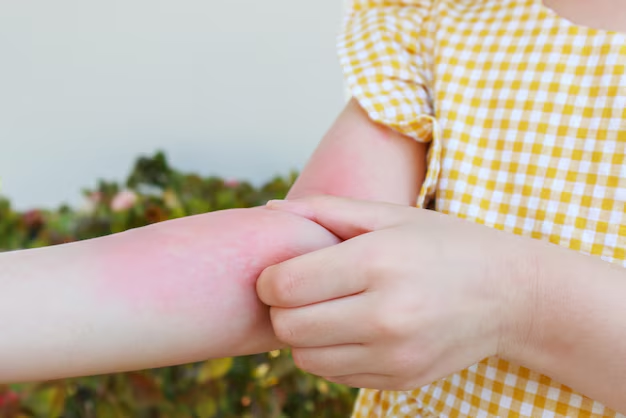Understanding Measles: How It Spreads and What You Need to Know
Imagine waking up one morning with a fever and a rash, and soon discovering that you’ve contracted measles, a highly contagious virus that’s been practically eradicated in many parts of the world thanks to vaccination. But how does one actually get measles, and why is it still a concern today? Let's delve into the details of how measles spreads, the significance of vaccination, and why understanding this disease matters.
What is Measles?
Measles is a highly contagious viral disease characterized by symptoms such as fever, cough, runny nose, red eyes, and a distinctive red rash. Caused by the measles virus, it spreads easily through respiratory droplets when an infected person coughs or sneezes. Despite being preventable through vaccination, measles can still pose risks, particularly in under-vaccinated populations or areas with vaccination gaps.
How Does Measles Spread?
Airborne Transmission
Measles spreads mainly through airborne transmission. This means the virus can be present in the air and on surfaces for up to two hours after an infected person coughs or sneezes. Close contact with an infected person greatly increases the risk of contracting the virus.
The Role of Immunization in Controlling Spread
Vaccination plays a crucial role in controlling the spread of measles. The Measles, Mumps, and Rubella (MMR) vaccine is highly effective and is often administered in two doses. To achieve community immunity and prevent outbreaks, a high percentage of the population must be vaccinated.
Vulnerability and Exposure
Those most vulnerable to contracting measles include:
- Unvaccinated individuals, especially infants who are too young to be vaccinated.
- Immunocompromised individuals who cannot receive the vaccine due to medical conditions.
- Travelers or those living in areas with low vaccination rates, increasing exposure risk.
Symptoms and Diagnosis
Early Symptoms
Measles typically begins with:
- High fever
- Cough
- Runny nose
- Conjunctivitis (red, watery eyes)
The Measles Rash
The rash is a hallmark of measles, usually appearing 3-5 days after the initial symptoms. It often starts on the face and spreads downward to the rest of the body.
Confirming the Diagnosis
Diagnosis involves clinical evaluation and testing to detect measles-specific antibodies. It is crucial to consult a healthcare provider if measles is suspected.
Prevention and Protection
Vaccination: Your Best Defense
Administering the MMR vaccine is the most effective way to prevent measles. Two doses are recommended for optimal protection.
Importance of Community Immunity
High vaccination coverage is necessary to protect those who cannot be vaccinated, aiding in the prevention of measles outbreaks.
Travel Precautions
When traveling to areas with higher measles incidence, ensure vaccinations are up to date. Consider early vaccination for infants if travel is unavoidable.
Understanding the Consequences
Health Complications
Measles can lead to severe complications such as:
- Pneumonia
- Encephalitis (brain swelling)
- Hearing loss
Global and Societal Impact
Measles outbreaks can strain public health systems and have significant economic costs due to hospitalizations and disease control measures.
The Resurgence of Measles
Factors Contributing to Outbreaks
Measles outbreaks can occur due to:
- Declining vaccination rates
- Misinformation about vaccine safety
- International travel introducing the virus to new regions
Addressing Misinformation
Combatting vaccine misinformation with accurate, science-based communication is essential to maintaining public trust in vaccination programs.
What You Can Do
Stay Informed
Understanding the importance of vaccination and recognizing symptoms promptly can aid in stopping the spread of the virus.
Advocate for Vaccination
Encourage others to stay vaccinated and support policies that promote high vaccination coverage to protect community health.
Support Global Health Initiatives
Supporting organizations that work to provide vaccinations to under-served and at-risk populations can make a significant difference.
Final Thoughts
While measles was once a common childhood illness, modern medicine has given us the tools to prevent it through effective vaccination. Understanding how measles spreads and taking an active role in prevention can help protect yourself, your family, and your community. By staying informed and advocating for widespread vaccination, we can aim to keep measles at bay and safeguard public health.
Quick Tips & Takeaways 📝
- Vaccinate: Ensure you and your family receive the MMR vaccine.
- Stay Informed: Recognize symptoms and seek medical advice if suspected.
- Travel Smart: Check vaccination status before traveling to areas with higher measles risk.
- Spread the Word: Advocate for accurate information about vaccines in your community.
- Support Initiatives: Back global health efforts to provide vaccines to high-risk areas.

Related Articles
- Are Measles Deadly
- Can Adults Get Measles
- Can You Get Measles If Immunised
- Can You Get Measles If Vaccinated
- Can You Get Measles If You Are Vaccinated
- Can You Get Measles If You Re Vaccinated
- Can You Get Measles If You're Vaccinated
- Can You Get Measles If You've Been Vaccinated
- Can You Get Measles More Than Once
- Can You Get Measles Twice